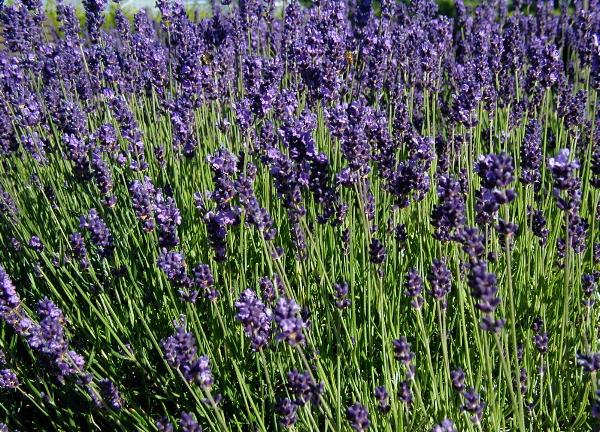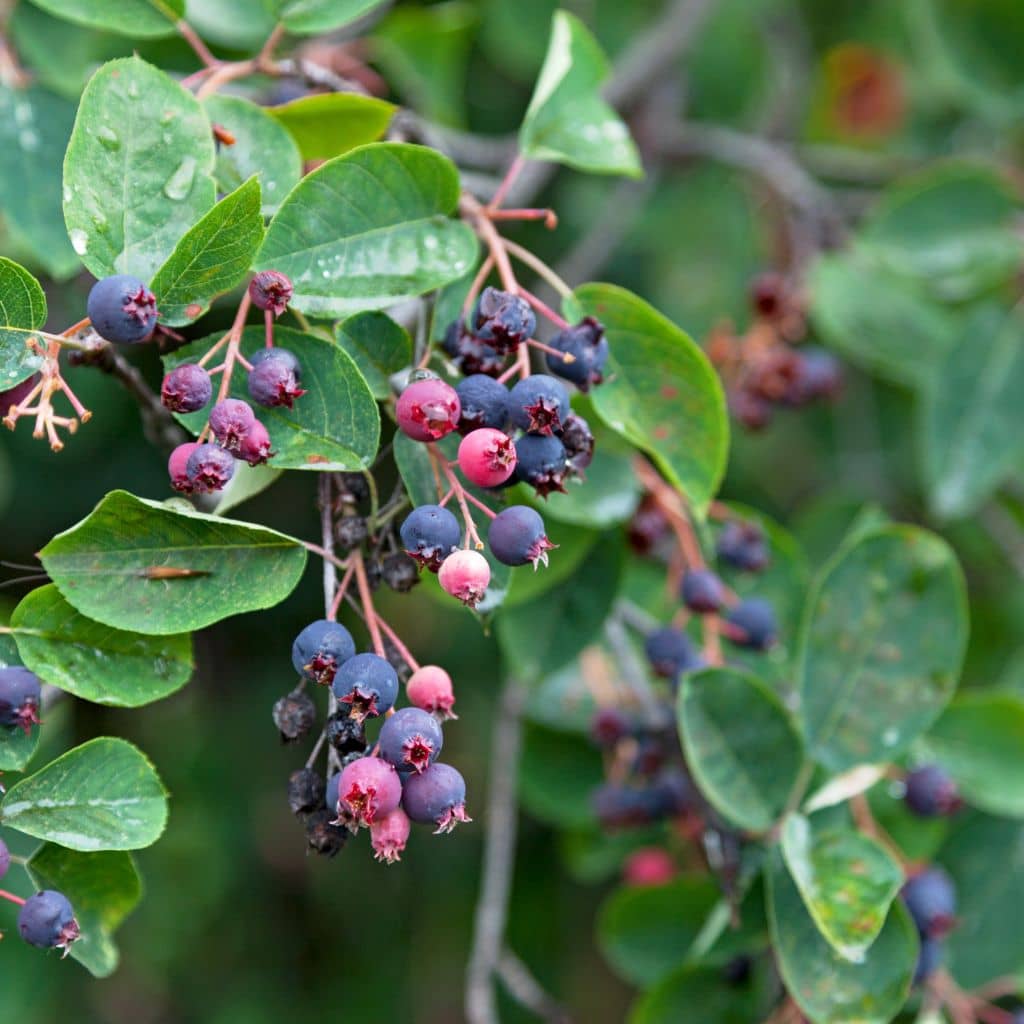By Maryann Readal
The Herb Society’s Herb of the Month for May is lavender, Lavandula angustifolia, which is one of almost 50 species of lavender (Blankespoor, 2022). It is also called Lavandula officinalis and English lavender, although it is not native to England. Lavendula angustifolia is native to countries surrounding the Mediterranean. L. angustifolia is the species most used for medicinal and culinary purposes. The word lavender is derived from the Latin word “lavare” which means to wash. It is an herb that prefers a sunny, dry climate and is the most winter hardy lavender, growing as an annual or a perennial depending on your growing zone. It can be propagated by taking cuttings in the fall or spring. There are many cultivars of Lavandula angustifolia including ‘Hidcote,’ ‘Munstead,’ and even one called ‘Susan Belsinger’ named for The Herb Society’s award-winning herbalist, author, and recent Honorary President.
Lavender is an herb that has been used since antiquity. The Egyptians used it as a perfume and also in the mummification process. It is believed that the politically savvy Cleopatra seduced Marc Antony and Julius Caesar with the fragrance of lavender. “Phoenicians and other ancient peoples of Middle Eastern regions used lavender for bathing and making their homes smell fresher” (Lawton, 2010). Hippocrates is credited with saying “the key to good health rests on having a daily aromatic bath.” Medieval and Renaissance washerwomen were called “lavenders” because they spread their laundry over lavender bushes to give the laundry a nice fragrance (Leigh, 2022).
In the 1st century A.D., Dioscorides, a Greek physician to the Roman army, recommended lavender for its antiseptic qualities. He wrote that taken internally, “lavender would relieve indigestion, sore throats, headaches, and externally clean wounds” (Perry, 2019). It was also used to “disinfect sick rooms in Persia, Greece and Rome” (American Botanical Council, N.D.). In Malaysia, lavender oil combined with peppermint and eucalyptus oil was used as a topical medicine that promised to cure minor aches and pains. It was called White Flower Oil and its use as an analgesic balm is still popular today. Traditional folk medicines still use lavender essential oil to treat inflammatory illnesses and anxiety.
English lavender is used in aromatherapy because of its relaxing properties. ”Research supports the calming, soothing and sedative effects of lavender when inhaled” (Amidon, 2013). In traditional Chinese medicine it is called “the broom of the brain” because of its effectiveness in treating sleep disorders (Luo, 2022). Its fragrance and relaxing properties makes it an essential ingredient in sachets and potpourris.
Because the flowers and leaves were fragrant and deterred insects, lavender was used as a strewing herb in the Middle Ages. It was also used to deter evil and Christians hung crosses woven with the plant in doorways to protect their homes. It was also used as an aphrodisiac. Some say that lavender’s use can be traced back to biblical times, claiming that the “spikenard” referred to in the Bible was lavender. However, some researchers say that the biblical “spikenard,” which may have looked similar to lavender, was actually the very fragrant plant Nardostachys jatamansi, which is in the honeysuckle family and grows in the Himalayas.
Lavandula angustifolia is the lavender that is used in cooking. Lavender flowers are a part of the French seasoning, herbes de Provence. Lavender flowers are often added to cakes and cookies, jellies, beverages, and salads. They have a strong flavor, so using a little is usually enough. Rubbing potatoes with lavender essential oil helps to keep them from sprouting (Abd El-Kader, 2016).
Lavender is a wonderful plant in the garden. Release its essential oil by rubbing lavender leaves on your skin to help keep mosquitos and other insects at bay while working among your plants. Plant it along pathways where brushing against the leaves will release its fragrant aroma. Lavender attracts bees, butterflies, and other pollinators to your garden. There are many good reasons to plant lavender, even if it is for only a single season.
Throughout history, lavender has been associated with love and romance and has been a part of wedding traditions. Love and lavender is evidenced in the 1980’s “Lavender’s Blue” song from Tim Hart and Friends as sung in the 2015 movie, Cinderella: (https://www.youtube.com/watch?v=Ow25lvYoKXo).
Lavender’s green dilly, dilly,Lavender’s blue,If you love me dilly, dillyI will love you.
It’s interesting to note that this song has its roots in an old English song from the 1600s, “Diddle, Diddle, Or the Kind Country Lovers.”
For more information about lavender, please visit The Herb Society’s Essential Facts for Lavender: https://www.herbsociety.org/file_download/inline/149725a4-88ed-4244-86bf-8507e18daa53
Medicinal Disclaimer: It is the policy of The Herb Society of America, Inc. not to advise or recommend herbs for medicinal or health use. This information is intended for educational purposes only and should not be considered as a recommendation or an endorsement of any particular medical or health treatment. Please consult a health care provider before pursuing any herbal treatments.
Photo Credits: 1) Lavandula angustifolia (WC Sten Porse, via Wikimedia Commons); 2) Meeting of Antony and Cleopatra (Sir Lawrence Alma Taderma, public domain); 3) White Flower Oil (Hoe Hin Pak Yeow Manufacturing); 4) Lavender sachets (Amazon); 5) Lavender field in France (courtesy of the author)
References
Abd El-Kader, A.E.S. et al. 2016. Using essential oils to decrease potato tubers sprouting, rotting and insect infestations during storage and ambient temperatures. Accessed 4/16/24. Available from https://jpp.journals.ekb.eg/article_47067_b3dfbf1bd4087a333ea5b65ca5c83bb0.pdf
American Botanical Council. N.D. Lavender flower. Accessed 4/8/24. Available from https://www.herbalgram.org/resources/expanded-commission-e-monographs/lavender-flower/
Amidon, Caroline. 2013. Essential facts for lavender. Accessed 4/9/24. Available from https://www.herbsociety.org/file_download/inline/149725a4-88ed-4244-86bf-8507e18daa53
Blankespoor, Juliet. 2022. The healing garden. Boston: Mariner Books.
Lawton, Barbara Perry. 2010. A love affair with lavender. Accessed 4/9/24. Available from https://ahsgardening.org/wp-content/pdfs/2010-05r.pdf
Leigh, Lex. 2022. History’s love of lavender: from mummies to bathhouses and beyond!Accessed 4/19/24. Available from https://www.ancient-origins.net/history-ancient-traditions/lavender-history-0016704
Luo, Jing and Jiang Wubian. 2022. A critical review on clinical evidence of the efficacy of lavender in sleep disorders. Accessed 4/16/24. Available from https://pubmed.ncbi.nlm.nih.gov/35412693/
McCoy, Joe-Ann. 1999. Lavender: History, taxonomy, and production. Accessed 4/15/23. Available from https://newcropsorganics.ces.ncsu.edu/herb/lavender-history-taxonomy-and-production/
Perry, Nicollete. 2019. A love letter to lavender. Accessed 4/8/24. Available from https://www.healthline.com/health/lavender-history-plant-care- types#:~:text=The%20Greek%20physician%20to%20the,only%20relaxing%2C%20but%20also%20antiseptic.
Taliesin, David. 2021. Lavender: the great nard controversy. Accessed 4/8/24. Available from https://sabatsandsabbaths.com/2021/06/30/lavender-the-great-nard-controversy/
.


